Choosing your fence is less about lumber and more about personality. A fence isn’t just a divider; it’s part of the architecture’s rhythm. Done right, it pulls the eye from gable to gate in one seamless line. If you’ve noticed how a crisp, well-proportioned fence can make a property feel complete, you’ve already seen the impact of thoughtful design.
For homeowners thinking beyond utility, a well-crafted fence starts with understanding what your home is saying. Explore expert options for wood fence installation in Richmond and see how design, proportion, and material come together in real-world projects.
Colonial Revival Homes – Order and Elegance
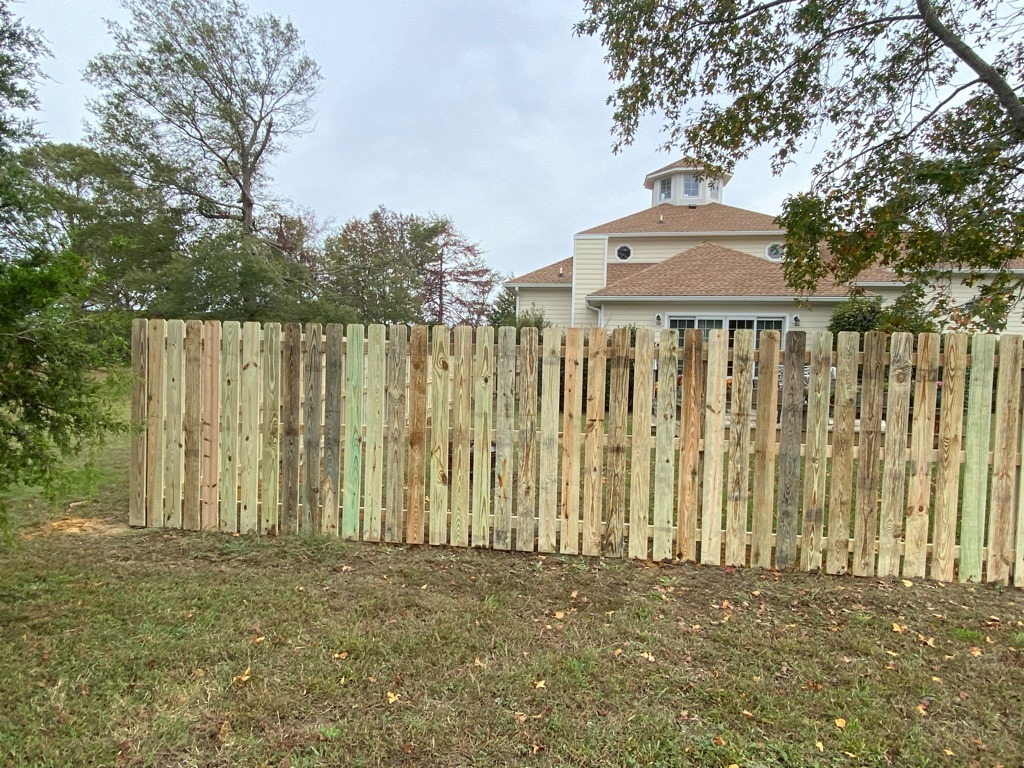
Brick façades, shuttered windows, white columns. It’s all about balance. To keep that precision flowing, you’ll want a fence that feels composed, not busy. A traditional picket fence works beautifully here: vertical rhythm, clean spacing, and just enough openness to echo the home’s poised front.
For more privacy without breaking form, a board-on-board layout does the trick. It offers depth and shadow without looking heavy. Even spacing, capped posts, and a soft eggshell finish complete the look. The trick is restraint or mirroring the architecture’s order instead of competing with it.
If you’re curious how other architectural periods manage proportion and pattern, take a quick look at the GSA’s architectural styles reference. It’s a fascinating primer on how design eras found their balance—something worth borrowing for your own yard.
Craftsman Homes – Warmth and Handcrafted Detail
Wide eaves, visible beams, earthy palettes—it’s architecture meant to feel human. In neighborhoods like Lafayette Gardens, you can almost sense the handwork in every porch column and window trim.
A shadowbox design fits naturally, alternating boards on each side to give a layered, built-by-hand feel. If you want a touch of artistry, try a lattice accent along the top. It plays with light, softens edges, and ties in with the home’s natural materials.
Go for cedar or redwood, let the grain show, and keep stain colors warm—think honey, russet, or amber tones that catch evening light. Beveled post caps or subtle metal accents lend the right finish. Just enough craft to say, “This was made with care.”
Ranch Homes – Simplicity Meets Function
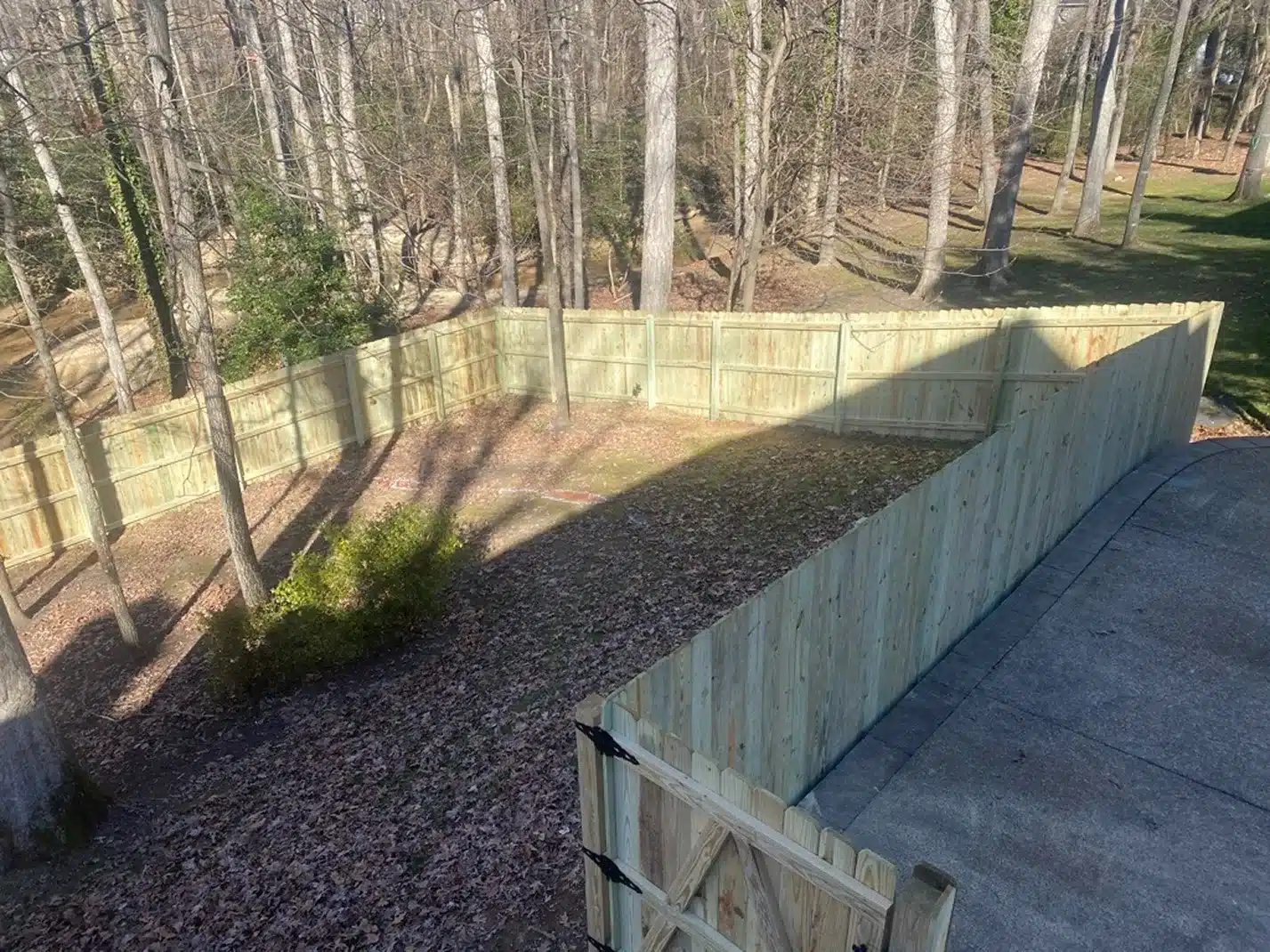
Step into Richmond’s quieter stretches, and you’ll see the enduring logic of the ranch: low roofs, wide yards, open flow between house and horizon. These homes don’t need ornate boundaries. They thrive on simplicity.
A post-and-rail fence feels at home here—sturdy, understated, and open. For homeowners who want privacy with a modern touch, a horizontal slat fence updates the formula while staying true to the ranch’s easygoing proportions.
Keep it low and let the boards follow the roofline’s direction. A rich natural stain adds texture without fuss. You’ll notice that the simpler the design, the stronger the impression—it’s that perfect balance between structure and air.
Victorian Homes – Ornament and Character
Homes on Summer Hill Ave and Columbia St celebrate color and flourish. Their fences should, too.
A decorative picket fence with curved or scalloped tops pairs beautifully with the home’s trim details. Or go for a board-on-board fence with a lattice top, giving privacy while keeping that sense of elegance alive. Soft color contrasts work wonders here—cream against coral brick, pale gray against deep blue siding.
The goal isn’t to match every flourish but to echo the rhythm. Repeat the window spacing subtly in your picket intervals. Choose finials or post caps that mirror porch spindles. When every element speaks the same design language, even a short fence feels part of the story.
Contemporary Homes – Clean Lines, Bold Contrast
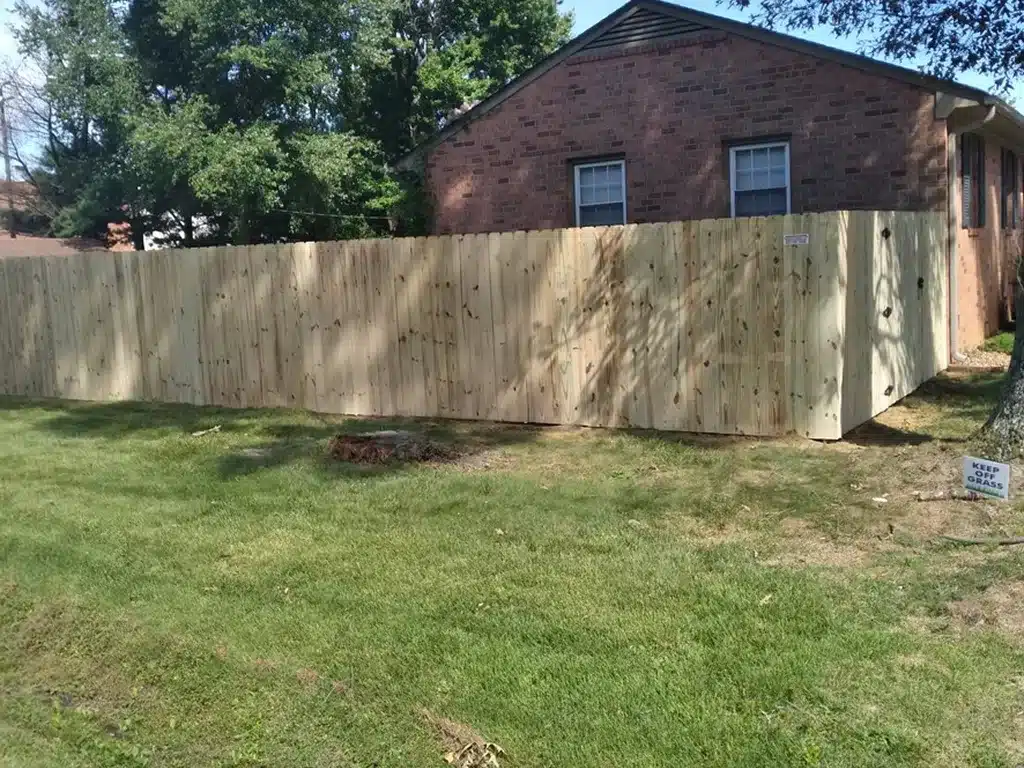
Modern homes show their geometry: Flat planes, large glass, minimal ornament—every angle is deliberate. A horizontal plank fence amplifies that precision, turning the property edge into an architectural statement.
For a bolder look, combine wood with metal or composite posts as the mix of warm grain and cool steel gives texture without clutter. Use consistent spacing and tight seams for a clean and tidy effect. In this style, imperfection shows, so precision matters.
Natural stains or deep char tones complement neutral exteriors. Keep the rhythm consistent, and you’ll create that sense of calm order modern design thrives on.
Beyond Style: The Finishing Touches That Matter
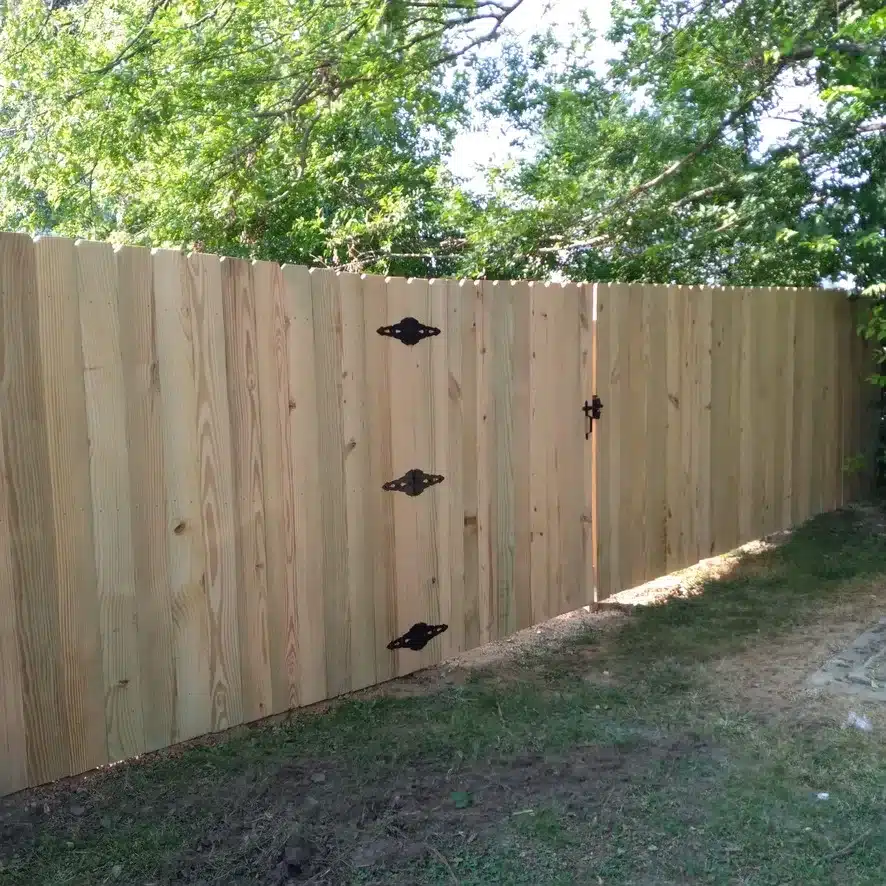
Details make the difference. The shape of a post cap, the sheen of hardware, the choice of stain—all small decisions that build visual harmony. Flat, beveled, or pyramid caps each shift a fence’s personality: beveled feels traditional, pyramid adds height, flat leans contemporary.
Post skirts or chamfered edges lend polish. Matte black hinges or brushed-steel latches echo door handles or outdoor fixtures. Choosing between semi-transparent and solid stains matters: one shows grain, the other creates a clean surface.
If you’re wrestling with whether your aging fence can be salvaged or needs a fresh start, take a look at this wood fence repair or replace guide. It’ll walk you through what’s worth saving and what’s holding your property back.
The Visual Principles Behind Great Fence Design
Every good fence respects three fundamentals: proportion, rhythm, and scale. Proportion keeps the height and spacing balanced with your home’s shape. Rhythm carries your eye along the boards, repeating patterns that feel natural to the architecture. Scale ensures the fence neither dwarfs the house nor disappears beside it.
These principles are simple but powerful. You’ll notice them in well-designed districts—the way a fence line continues the logic of a porch rail, or how a gate feels like part of the façade rather than an afterthought. For examples of craftsmanship trusted by local homeowners, explore the work of a highly rated fence contractor known for their design harmony.
Where Craft Meets Character
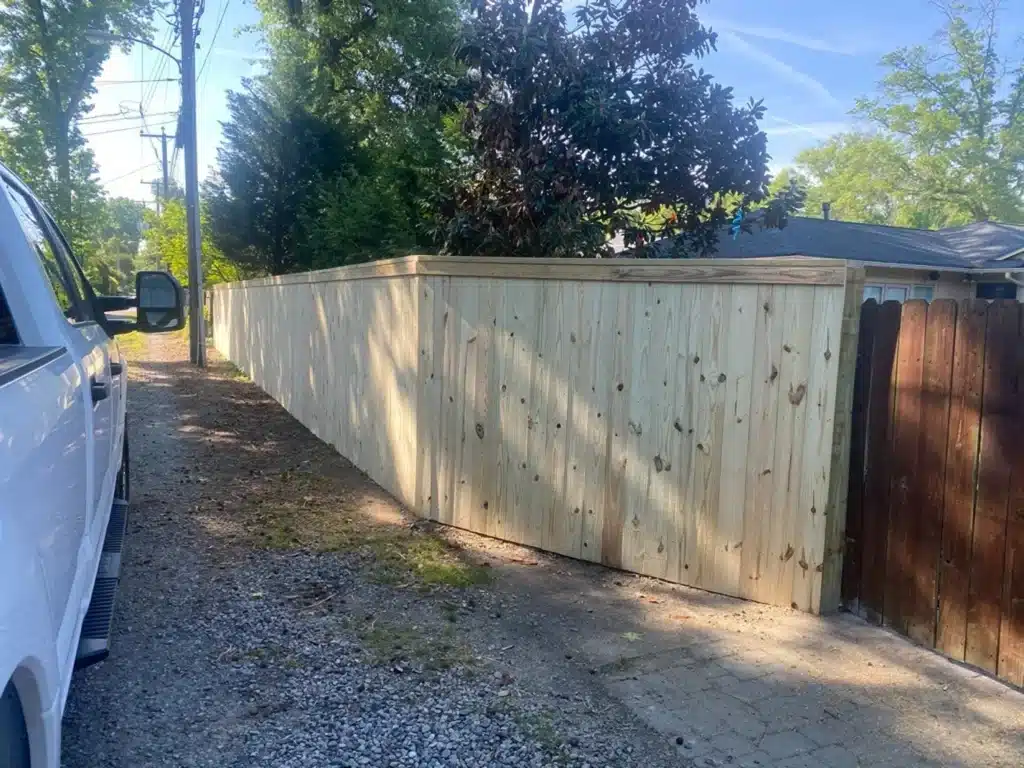
Great fences start with vision, not just materials. It’s the eye for detail or the understanding that form and function can share the same grain that turns a project into craftsmanship. Whether you’re refining a historic property or defining a modern build, collaboration is key.
For personalized guidance, design input, or to discuss materials that stand up to Richmond’s climate, reach out at 804-402-9980 or schedule your consultation. Because the best fences don’t just mark property lines—they elevate them.
Frequently Asked Questions
How long does a wood fence typically last?
Most wood fences in Richmond last 15 to 20 years with consistent upkeep. Humidity, rain, and seasonal shifts can shorten that lifespan if boards aren’t sealed properly. Choosing pressure-treated pine or cedar and maintaining a solid stain coat helps resist warping and rot. Routine inspections and timely repairs extend the fence’s strength and appearance for decades.
Which type of wood finish performs best in humid conditions?
Humidity challenges outdoor finishes, especially in shaded or moisture-prone spots like Reedy Creek. Oil-based semi-transparent stains provide the best protection because they penetrate deep, highlight natural grain, and block UV damage. Re-sealing every two to three years keeps color even and prevents surface cracking as temperatures swing through the seasons.
How can I tell if my aging fence needs repair or full replacement?
If your fence leans more than a few inches, posts feel soft at the base, or boards crumble when tapped, it’s likely time for a full replacement. Minor issues—like a single warped panel or a loose gate hinge—can be fixed with targeted repairs. But when damage spreads along multiple sections, rot reaches the posts, or moisture has weakened the structure, patchwork won’t last. In damp climate, replacement often saves money long-term by preventing repeated fixes and restoring both strength and appearance in one go.
Are custom wood fences worth the investment?
They are—especially in neighborhoods near Byrd Park, where architectural variety rewards thoughtful detailing. Custom touches like lattice tops, decorative caps, or horizontal rails can harmonize with trim lines and elevate curb appeal. Beyond beauty, customization ensures your fence fits both your property’s dimensions and the distinct personality of your home.
